In Charleville, along the banks of the Meuse, a strange procession parades. At its head, an unconventional bride and groom, a lunar cowboy in a fringed jacket and immaculate jeans, hat on his head and leather cord around his neck (Esteban), hand in hand with his “young” wife (Yolande Moreau ) in a long blue and gold embroidered dress, looking like a Slavic babushka, her long white hair pulled up in a loose bun. Behind them, the guests are in tune, including William Sheller in the role of an anything but orthodox priest and Grégory Gadebois unrecognizable, disguised in a pink dress, heels and ascot. The marriage is not quite one, the spouses are a false couple, but no matter, the time has come for the wedding.
In her new film, The Poet's Bride, Yolande Moreau has summoned a joyful and baroque cast, surrounded by a beautiful line-up of actors. “Playing the bride at my age is the icing on the cake,” rejoices the 70-year-old actress and director mischievously. In this lovely comedy, she is indeed Mireille, this “fiancee of the poet” who, after a stay in prison, returns to her hometown and her childhood home, which she inherited.
Also readThe Principal: Roschdy Zem on the honor roll
In this large decrepit building, guarded by the statue of a monumental deer, she decides to welcome three very different tenants, but who are all hiding something. Cyril, a young student at the Beaux-Arts, where she works as a canteen worker, angry with his family; Bernard, a municipal gardener who goes out at night transformed into a transvestite; and Elvis, an undocumented Turk who loves folk and America. They are soon joined by Fernando, Mireille's former great love, who betrayed and abandoned her years before. Brooding over these rascals with her melancholic blue gaze like a falsely severe mother hen, ensuring the smooth running of the household with small cigarette deals, she will take her world on a strange adventure.
Yolande Moreau undoubtedly reveals a lot in this film, her third, a little crazy like her characters but madly endearing, with a tender humanity that is a little outdated but radiant. And that's all of its charm, as it easily imposes its zany and generous universe, which we discovered in 2004 in her first feature film, When the Sea Rises (César for best first film, César for best actress). “I actually put a lot of myself into it, starting with the filming location, the Ardennes,” she confirms.
“That’s where I met the father of my children, in a hippie community where we stayed in plastic tepees. The future was utopian, and I was convinced that we were moving towards a better world. My film talks about this, the need we all have to escape, to rediscover values that are a little forgotten today.”
The other source of inspiration was a photo discovered in an art magazine, to illustrate an article on Shaun Greenhalgh, a famous English forger. “I was fascinated by the contrast between this clumsy guy with his big fingers and the finesse of the works he had created,” she says. However, there is no question of making a documentary about it. “What interested me was the theme of usurpation. Why do we dream so much about coming to terms with reality and taking on another personality?”
His whole family is gathered here. Her artistic family, François Morel and Philippe Duquesne, her lifelong accomplices, with whom she shared the Deschiens adventure in the troupe of Jérôme Deschamps and Macha Makeïeff. His daughter Héloïse Moreau too, credited as scriptwriter. Without forgetting her four grandchildren, three girls and a boy aged 18 to 28, all present, including the youngest in a scene where she flirts with Sergi Lopez in a bar. There is also Frédérique Moreau, co-writer of the film. But there, no family connection. “I was looking for someone to help me. I saw her arrive, she had the same name as me and, like me, she had a knee problem and walked with a cane. Two limping Moreaus, this image amused me, and I chose it.”
The Note of Figaro: 2.5/4

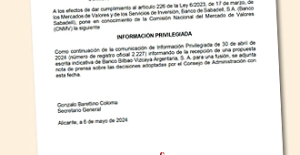 Sabadell rejects the merger with BBVA and will fight to remain alone
Sabadell rejects the merger with BBVA and will fight to remain alone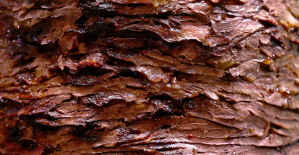 In Germany, the far left wants to cap the price of “doner kebabs”
In Germany, the far left wants to cap the price of “doner kebabs” Israel-Hamas war: Gaza between hope of truce and fear of Israeli offensive in the South
Israel-Hamas war: Gaza between hope of truce and fear of Israeli offensive in the South “Mom, Dad, please don’t die”: in the United States, a nine-year-old child saves the lives of his parents injured in a tornado
“Mom, Dad, please don’t die”: in the United States, a nine-year-old child saves the lives of his parents injured in a tornado The presence of blood in the urine, a warning sign of bladder cancer
The presence of blood in the urine, a warning sign of bladder cancer A baby whose mother smoked during pregnancy will age more quickly
A baby whose mother smoked during pregnancy will age more quickly The euro zone economy grows in April at its best pace in almost a year but inflationary pressure increases
The euro zone economy grows in April at its best pace in almost a year but inflationary pressure increases Children born thanks to PMA do not have more cancers than others
Children born thanks to PMA do not have more cancers than others “House of the Dragon”, “Succession”… Max, the new streaming platform from HBO and Discovery, launched in France on June 11
“House of the Dragon”, “Succession”… Max, the new streaming platform from HBO and Discovery, launched in France on June 11 The A13 motorway will finally reopen this Friday, in one direction only
The A13 motorway will finally reopen this Friday, in one direction only TNT commission of inquiry: tensions between LFI deputies and Macronists before the vote on the report
TNT commission of inquiry: tensions between LFI deputies and Macronists before the vote on the report Apple unveils a new, more efficient iPad range
Apple unveils a new, more efficient iPad range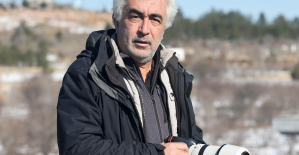 The Gaza War invites itself to the 2024 Pulitzer Prizes
The Gaza War invites itself to the 2024 Pulitzer Prizes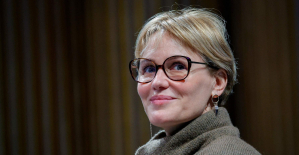 Judith Godrèche presents a short film on sexual violence in Cannes
Judith Godrèche presents a short film on sexual violence in Cannes Kevin Spacey: new trial in sight in London for the American actor, for sexual assault
Kevin Spacey: new trial in sight in London for the American actor, for sexual assault Taylor Swift fans make London pub Black Dog their new place of pilgrimage
Taylor Swift fans make London pub Black Dog their new place of pilgrimage Omoda 7, another Chinese car that could be manufactured in Spain
Omoda 7, another Chinese car that could be manufactured in Spain BYD chooses CA Auto Bank as financial partner in Spain
BYD chooses CA Auto Bank as financial partner in Spain Tesla and Baidu sign key agreement to boost development of autonomous driving
Tesla and Baidu sign key agreement to boost development of autonomous driving Skoda Kodiaq 2024: a 'beast' plug-in hybrid SUV
Skoda Kodiaq 2024: a 'beast' plug-in hybrid SUV The home mortgage firm rises 3.8% in February and the average interest moderates to 3.33%
The home mortgage firm rises 3.8% in February and the average interest moderates to 3.33% This is how housing prices have changed in Spain in the last decade
This is how housing prices have changed in Spain in the last decade The home mortgage firm drops 10% in January and interest soars to 3.46%
The home mortgage firm drops 10% in January and interest soars to 3.46% The jewel of the Rocío de Nagüeles urbanization: a dream villa in Marbella
The jewel of the Rocío de Nagüeles urbanization: a dream villa in Marbella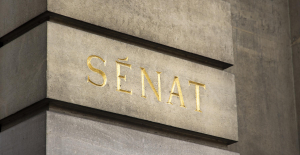 Institutions: senators want to restore the accumulation of mandates and put an end to the automatic presence of ex-presidents on the Constitutional Council
Institutions: senators want to restore the accumulation of mandates and put an end to the automatic presence of ex-presidents on the Constitutional Council Europeans: David Lisnard expresses his “essential and vital” support for François-Xavier Bellamy
Europeans: David Lisnard expresses his “essential and vital” support for François-Xavier Bellamy Facing Jordan Bardella, the popularity match turns to Gabriel Attal’s advantage
Facing Jordan Bardella, the popularity match turns to Gabriel Attal’s advantage Europeans: a senior official on the National Rally list
Europeans: a senior official on the National Rally list These French cities that will boycott the World Cup in Qatar
These French cities that will boycott the World Cup in Qatar “The future is for us”: “disappointed” and “proud” at the same time, Al-Khelaïfi sees the glass half full after the elimination of PSG
“The future is for us”: “disappointed” and “proud” at the same time, Al-Khelaïfi sees the glass half full after the elimination of PSG PSG: “Since January, these have not been my best matches,” agrees Zaire-Emery, who promises to “come back stronger”
PSG: “Since January, these have not been my best matches,” agrees Zaire-Emery, who promises to “come back stronger”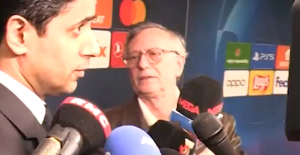 “What is this question, honestly?” : Nasser Al-Khelaïfi (very) annoyed after PSG-Dortmund
“What is this question, honestly?” : Nasser Al-Khelaïfi (very) annoyed after PSG-Dortmund “I am the guy who has to score the goals”: Mbappé does not hide and assumes responsibility after PSG’s exit
“I am the guy who has to score the goals”: Mbappé does not hide and assumes responsibility after PSG’s exit


















